Composing food for food photography is no easy task! Let me take you behind the scenes to discover step-by-step how I styled this passion fruit trifle. Good food photography composition, trifle or other desserts, is critical to capturing a perfect shot.
This is one of the images I am most proud of because it is challenging to get cream to look like this.
Let’s dive in!
On a macro level, looking at the composition across the whole frame. Looking at the big picture here we have to be really strong with all our visual elements in order to make minimalist food photography really powerful.
Color Theory for Strong Visual Impact
The first composition theory that we’ll look at is colour theory. In the image above I used complementary colours, yellow and blue. They are on opposite sides of the color wheel, making them complementary colors. If you want to learn more about colour theory, you can check out my three-part series here.
Using color contrast, we have a deep blue in the background, and I’ve purposefully done that to complement and contrast the food, which is a bright yellow. That allows the food to jump out of the image at you, just like the flavours in the dish.
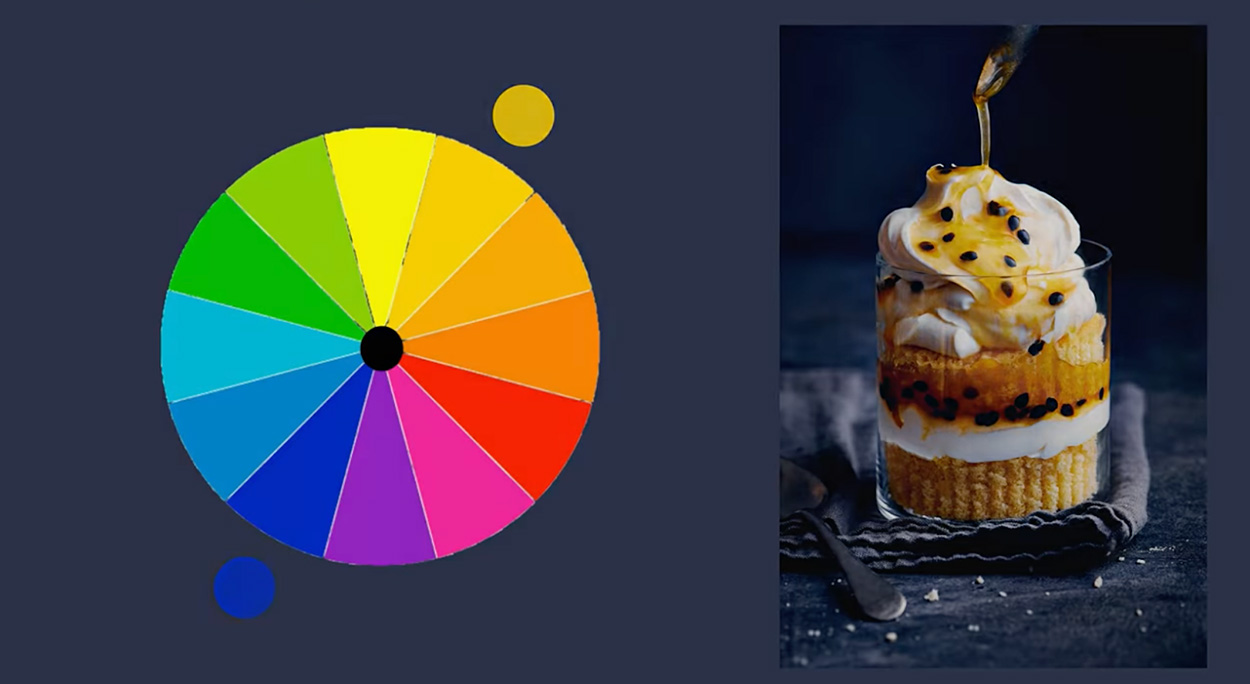
Layers of Interest
Another one of my favourite compositional techniques is layering, and it is key to this photo. The hero subject is a simple dessert in a glass. So how can we make this more interesting?
The food photography composition of this trifle involved adding elements like:
- A linen in the same colour as the background to add depth
- A spoon pouring syrup to create movement
- A scattering of crumbs in the foreground
All of this helps it feel like you’re there with me while I’m plating the dessert.
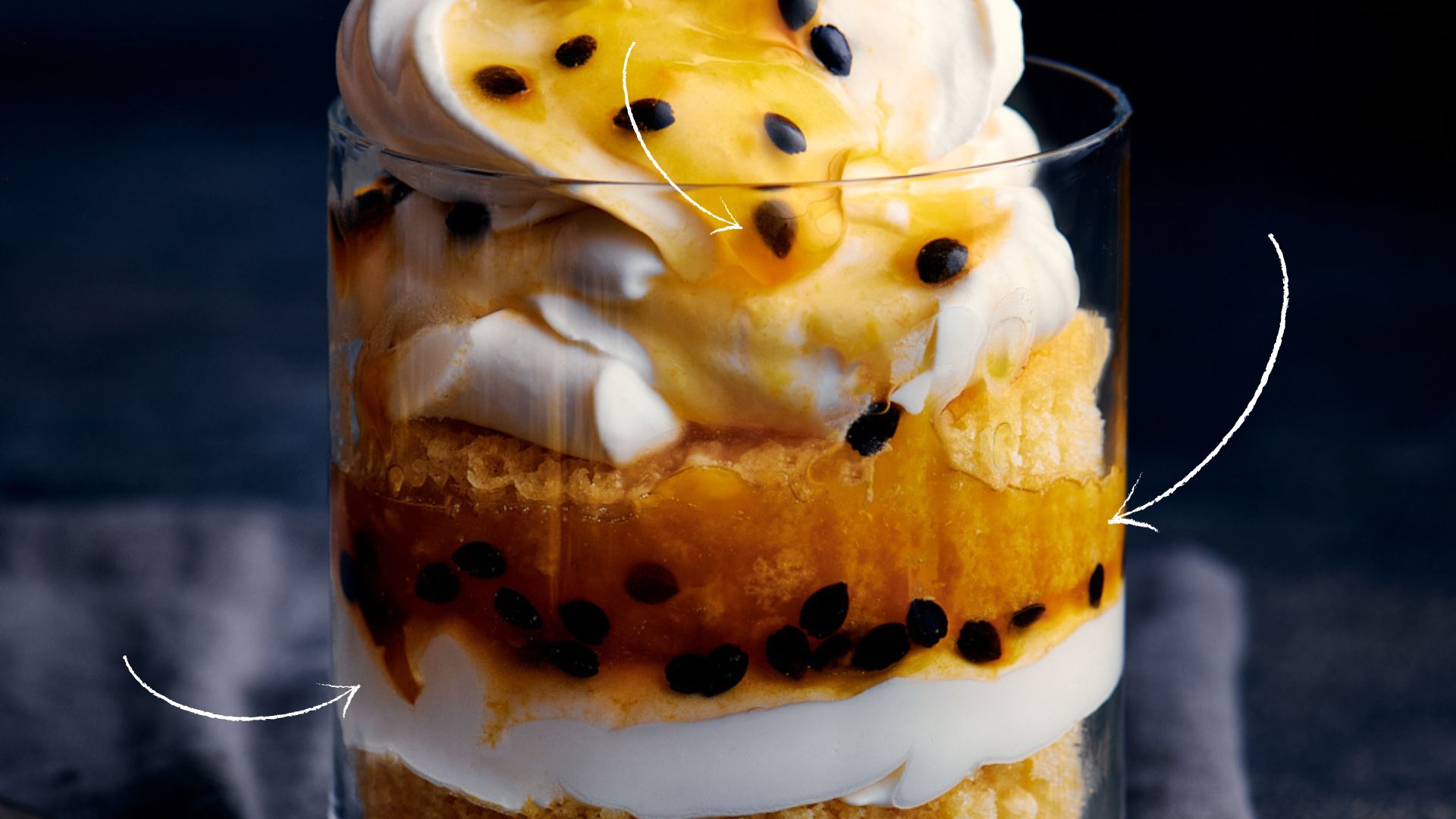
Micro-Level Composition Packs a Punch
Jumping into the micro level, where we are looking at the composition within our hero food subject, it had to be visually appealing. It had to have layers that were interesting and had different textures. Focusing on the smaller details is crucial in food photography composition trifle shots like this one.
You can see how the shadows bounce around with the trifle and the cake layers. The seeds of the passion fruit create something interesting as well. So all of these varied textures are visually appealing to both the eye and the taste buds.
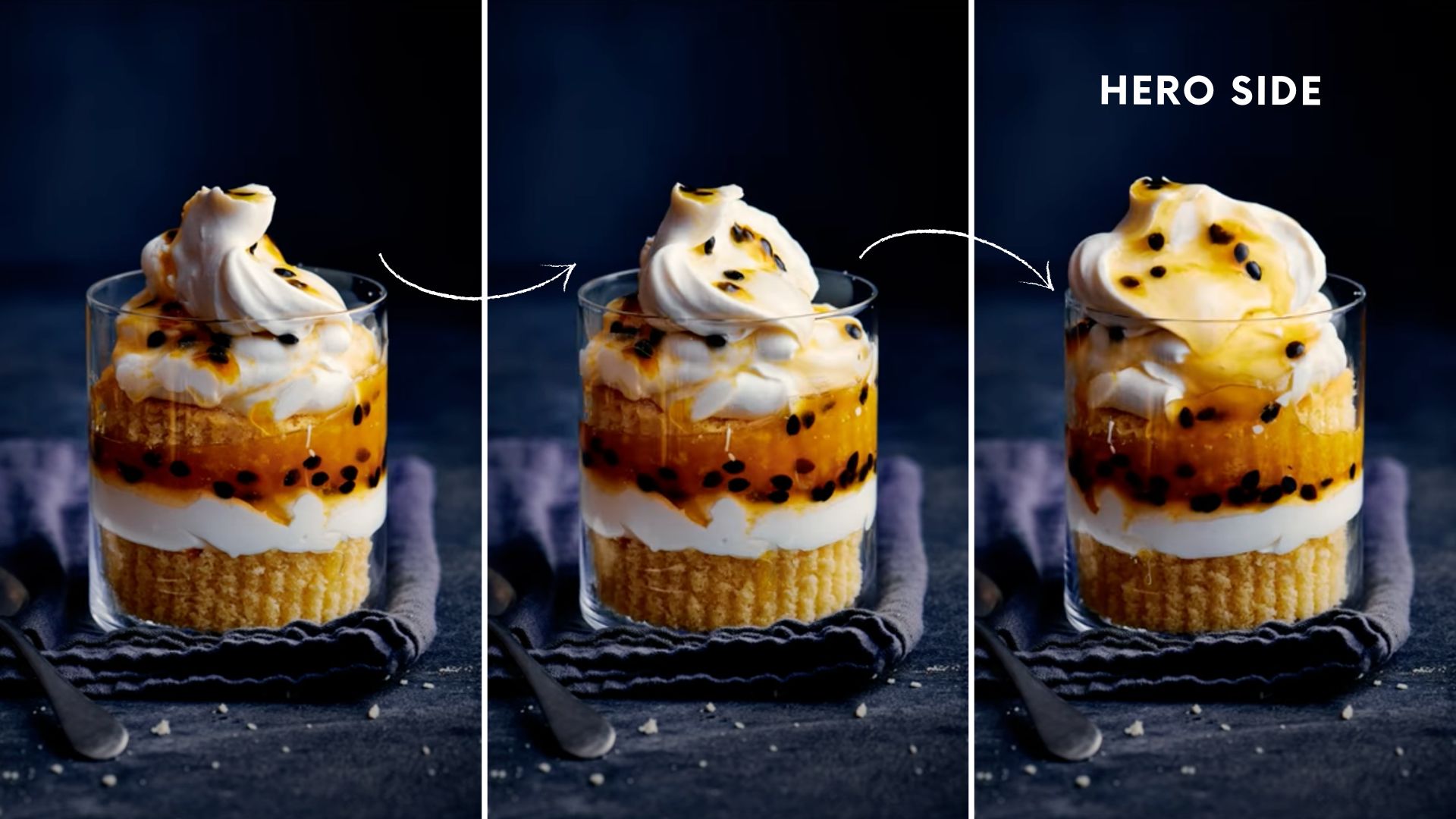
Find the Hero Angle
In this image, the cream is a hero element. It is not easy to get the height of this cream, but the height is important. It took me two scoops to get the height and then I had to rotate the glass to really get the best angle for the cream. Proper food photography composition, trifle or other dessert, often requires paying attention to such details.
This is what I call the hero angle of the food.
How can you turn the subject a little bit to see what is most flattering to the camera? This element is super important.
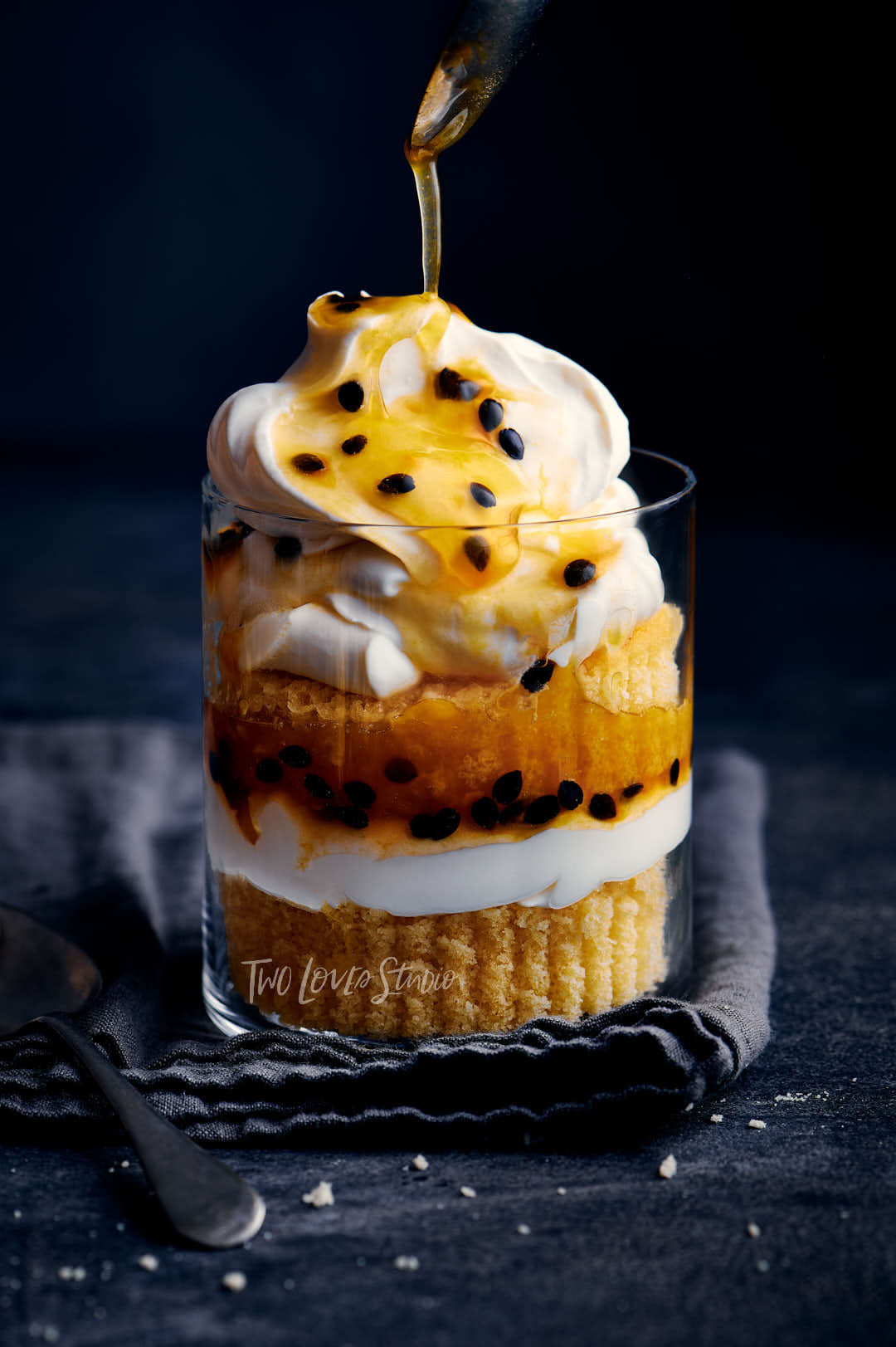
Food Photography Trifle Composition: Creating the Final Image
Sometimes getting the perfect pour shot isn’t easy. Often it’s made up of several images put together, known as compositing. For this image, I composited a bunch of images together in Photoshop to make sure that I had that perfect look, making sure to edit out any blemishes. When working with food photography composition, trifles can be particularly challenging.
I might have broken a compositional rule in this photo and that is that I have two spoons. I feel like maybe one might have made more sense. What do you think? Let me know in the comments below if you would have used two or one.
If you’re interested to learn more about composition, check out my Composition Essentials Masterclass.
FAQs?
Adding linens, crumbs, handmade ceramics and real stone or wooden backgrounds. All of these items have realistic textures that create depth in food photography.
Complementary Colors is a Color Theory technique where you pair colors directly opposite each other on the color wheel. For example, blue and yellow are directly opposite. Or red and green. This creates harmony.
Instead of using an array of random colors, try to create harmony in your images by using color theories. Simple choose a theory, like analogous or complementary colors, and pick the corresponding colors from the color wheel. Use these colors to select backgrounds, props and food to compose with.
The Clone Stamp is a great tool to help remove reflections in Photoshop. You can also use Content Aware Fill to assist with removals once you’ve made your selection using your desired selection tool.

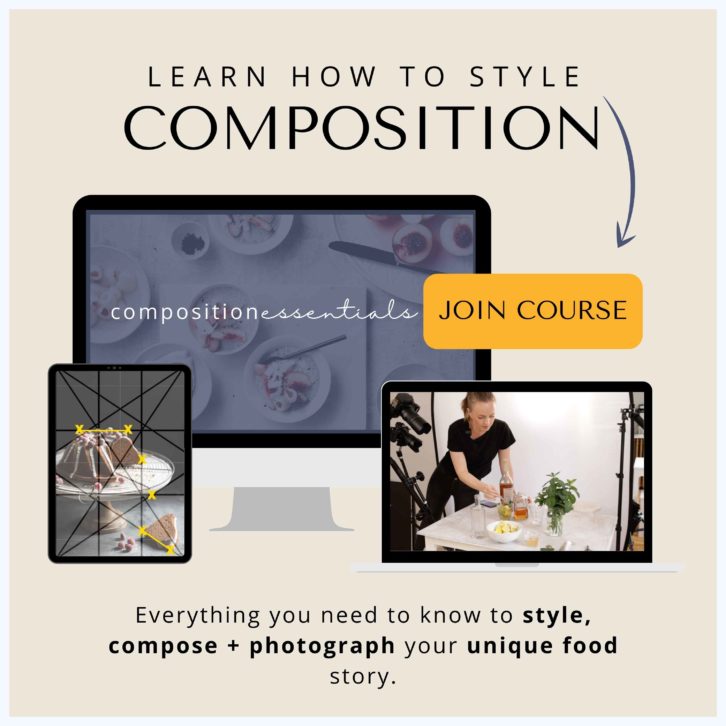


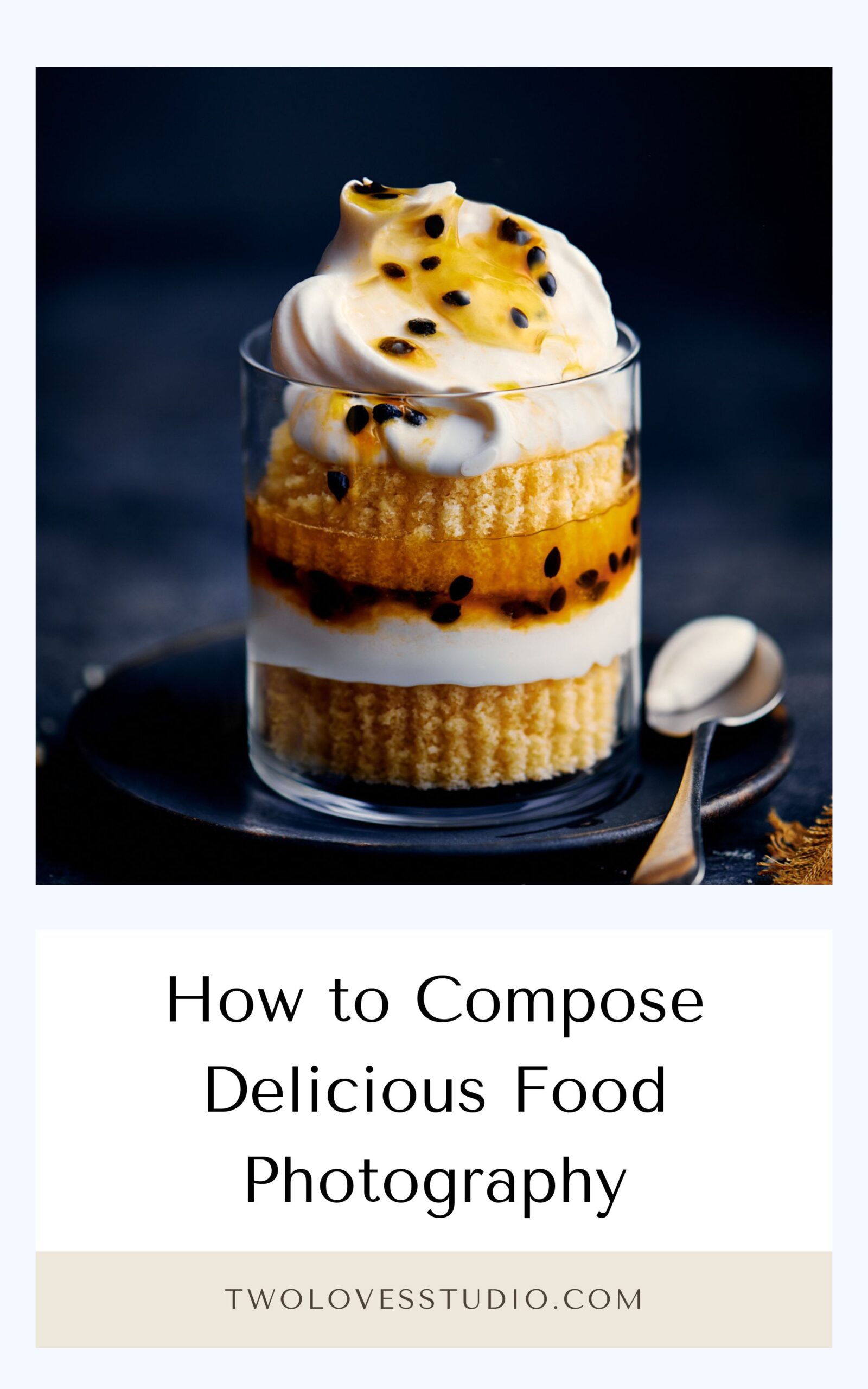
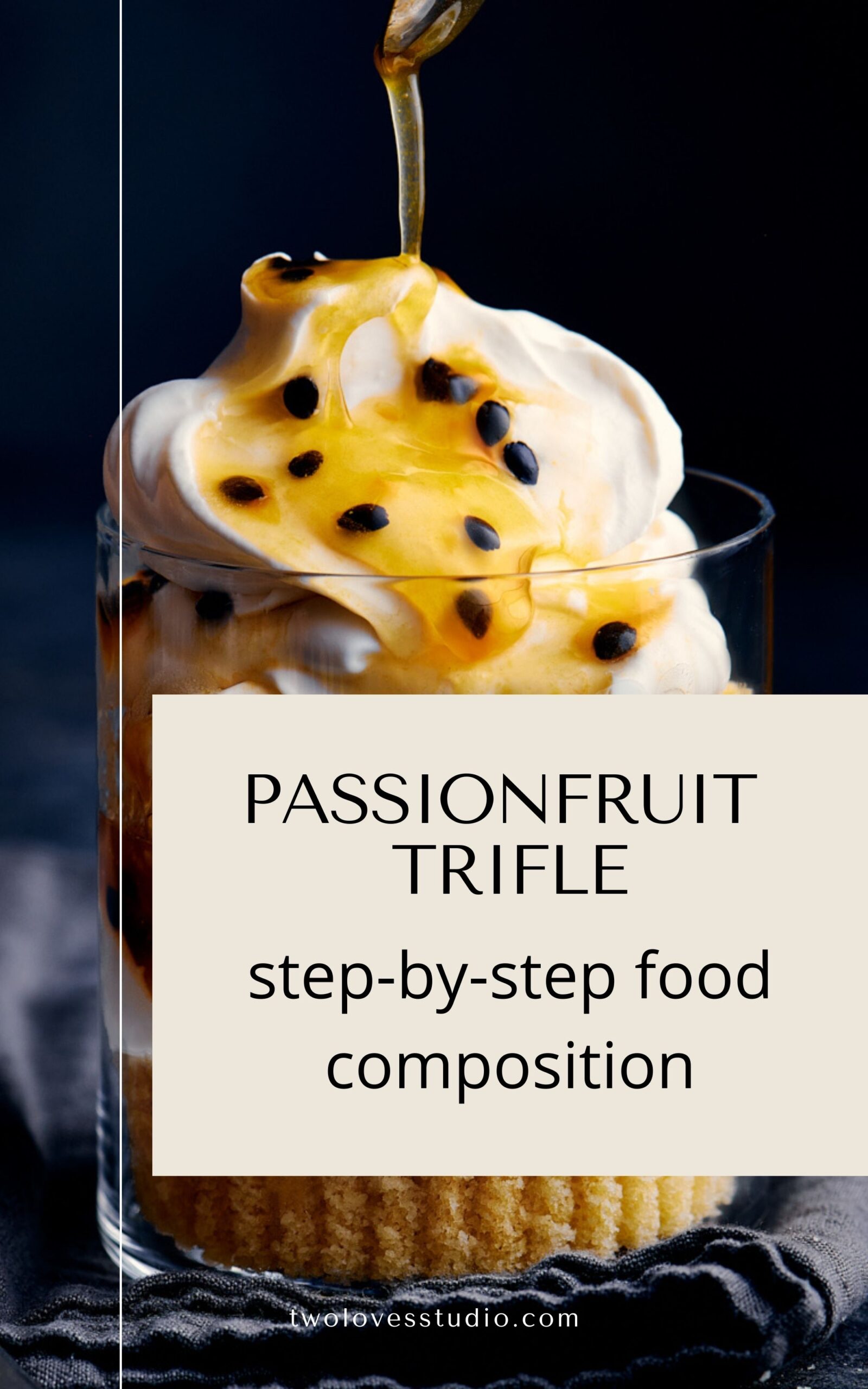
Super4dtoto
I really enjoyed reading this! The content is well-organized and full of valuable insights that are easy to implement. Thank you for sharing such useful information; it’s a fantastic resource I’ll be recommending to others.